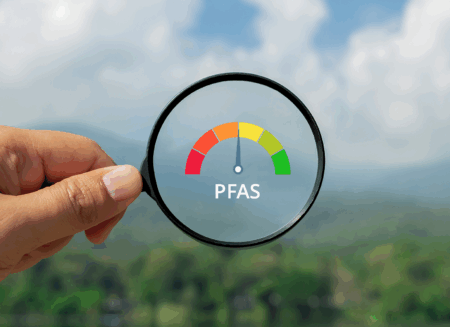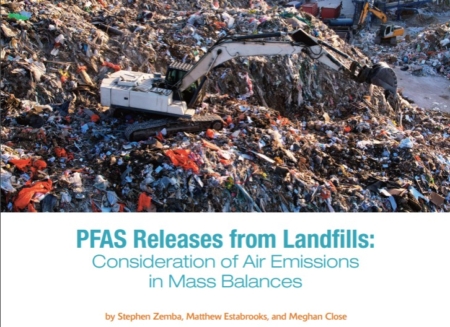Once again, we are deferring the next installment on PFAS air emissions, as EPA’s recent PFAS announcement deserves some discussion.
After some initial silence during the administration change, EPA is proposing to continue development of PFAS regulations on many fronts, but possibly with greater reserve, as indicated in its subsequent announcement to go forward with drinking water MCLs for PFOA and PFOS only and rescind Hazard Index and MCLs for the other PFAS to allow for further study. Although lacking specifics, a particularly interesting mention by EPA is the proposed Effluent Limitation Guidelines (ELGs) that were put on hold in January. ELGs imply a need to reduce PFAS loadings to wastewater treatment plants, and their resurrection suggests the eventual inclusion of PFAS in NPDES permits and development of pretreatment standards for PFAS-rich wastewater sources. At the root of all wastewater regulations are Ambient Water Quality Criteria (AWQCs), which EPA proposed for PFOA and PFOS in late 2024 for the protection of human health, and which we commented on in our last blog. Interestingly, the AWQCs were not mentioned in EPA’s announcement, though they remain proposed and the extended comment period is now closed. As a reminder, these AWQCs are proposed at sub part-per-trillion levels:
| Exposure Pathways | PFOA | PFOS |
| Fish Ingestion Only | 0.0036 | 0.07 |
| Fish Ingestion and Drinking Water Consumption | 0.0009 | 0.06 |
Will these AWQCs be promulgated at the proposed levels, or may EPA revise them in response to comments? We will probably need to wait a few months to find out, but what seems clear is that any significant changes will likely be rooted in EPA’s choices of toxicity data. EPA’s formula for setting AWQCs are:

where the terms are:
| AWQC | Ambient Water Quality Criteria |
| RfD | Reference Dose (non-cancer) |
| RSD | Cancer Risk-Specific Dose = 10-6/CSO |
| CSO | Oral Cancer Slope Factor |
| BW | Body Weight |
| RSC | Relative Source Contribution (used for non-cancer risk to account for exposure via other pathways) |
| WI | Water Ingestion Rate |
| FI | Fish Ingestion Rate |
| BAF | Water-to-Fish Bioaccumulation Factor |
Several states had developed AWQCs prior to EPA, but in only one instance did values reach sub-ppt levels. The following table illustrates the principal difference between EPA and several state agencies, using the Michigan Department of Environment, Great Lakes, and Energy (EGLE) as an example. As highlighted, EPA is using much more stringent toxicity values – by factors of 137 and 114,000 for PFOS and PFOA, respectively.
| Parameter | Michigan EGLE | EPA | ||
| PFOA | PFOS | PFOA | PFOS | |
| Fish Ingestion Rate FI (g/d) | 15 | 15 | 21.3 | 21.3 |
| Water Ingestion Rate WI (L/d) | 2 | 2 | 2.3 | 2.3 |
| Body Weight BW (kg) | 70 | 70 | 80 | 80 |
| Reference Dose RfD or Risk-Specific Dose RSD (ng/kg-d) | 3.88 | 13.67 | 0.000034 | 0.1 |
| Weighted Bioconcentration Factor1 BCF (L/kg) | 85 | 4395 | 35 | 1042 |
| Relative Source Contribution | 0.8 | 0.8 | 1 | 0.2 |
| Water Quality Criteria (ng/L) | 66 | 11 | 0.0009 | 0.06 |
As discussed in our last blog, EPA considers some PFAS to rank among the most toxic compounds in its November 2024 Regional Screening Levels (RSL) tables. For EPA to upwardly revise its proposed AWQCs, it would need to revise its toxicity values to less conservative values. Indication may be provided this month as EPA is due to revise its RSL tables (which have seen numerous changes to PFAS toxicity values in the past few years). EPA’s change of course on its MCLs offers the possibility of a more pragmatic approach to PFAS regulations in general.
Thus, while Administrator Zeldin’s announcement appears to indicate a plan to stay the course on PFAS regulation, the details of EPA’s focus and priorities are unclear and will be interesting to monitor in the coming months.
- Both EGLE and EPA consider multiple trophic levels of fish. Table parameters represent the total fish ingestion rates and bioconcentration factors weighted by fractional ingestion. ↩︎





